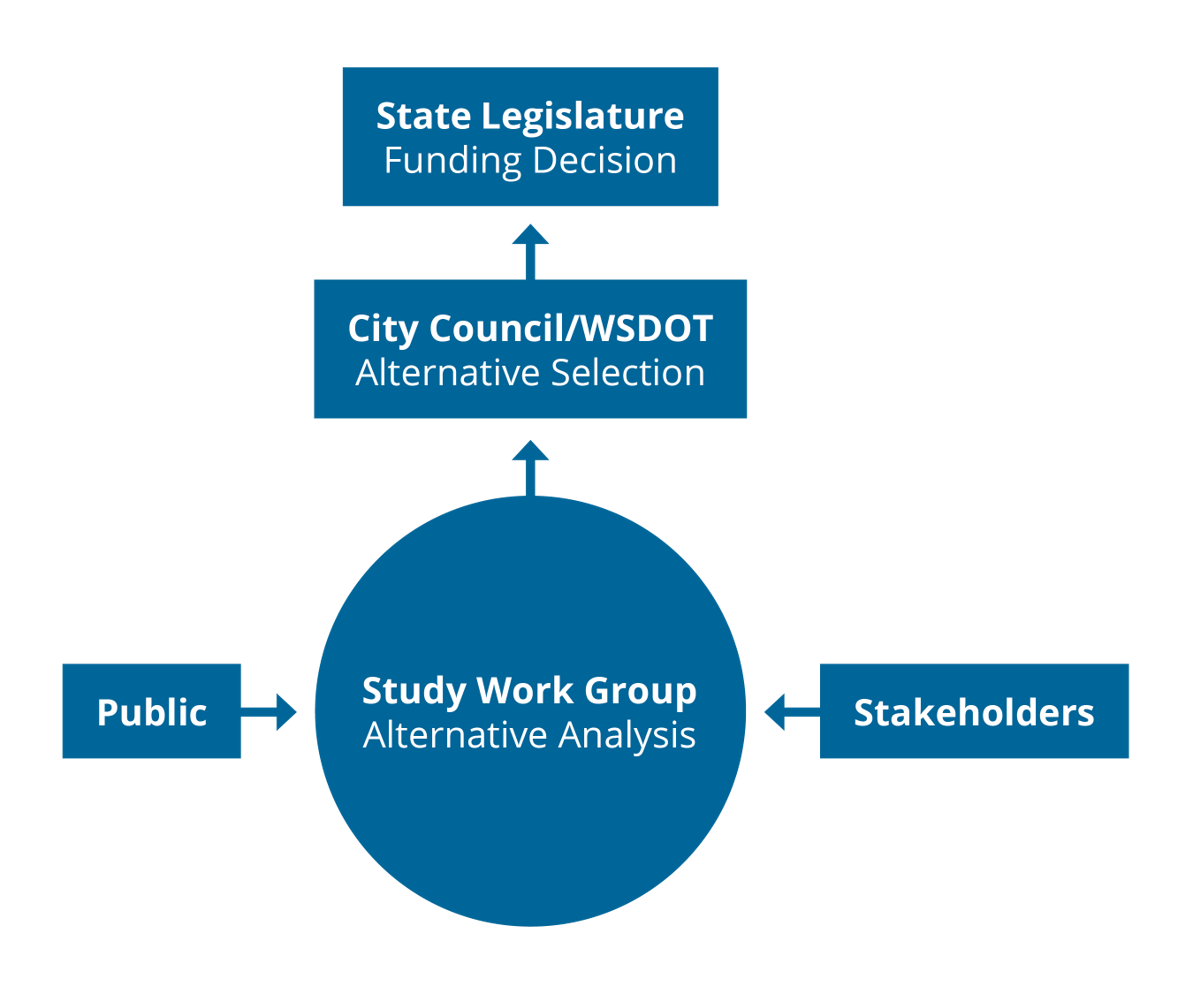Share Study purpose and need on Facebook
Share Study purpose and need on Linkedin
Email Study purpose and need link
-
Plan for rapid growth. By 2035, Downtown, Wilburton and East Main light rail station areas planned to grow by 50 percent.
-
Ease congestion and improve safety by adding an I-405 interchange in south Downtown Bellevue.
-
Improve access to and from destinations along I-405 and on local streets for people walking, rolling, biking, and riding transit.
- Support urban design, land use, economic development and transportation policies.
Share Guiding principles on Facebook
Share Guiding principles on Linkedin
Email Guiding principles link
- Improve access and efficiency
- Encourage safe multimodal connections
- Support economic development
- Align with existing plans and policies
- Engage stakeholders and community
- Manage cost
Share Decision-making process on Facebook
Share Decision-making process on Linkedin
Email Decision-making process link

Using both community input and evaluation criteria, the study work group will evaluate interchange alternatives. The study work group includes staff from the City of Bellevue, Washington State Department of Transportation and Sound Transit. The study work group will identify a preliminary preferred alternative and present it to the City Council. The City Council and WSDOT will recommend a preferred alternative to the state legislature to consider funding to design and build the project.
Share Evaluating the alternatives on Facebook
Share Evaluating the alternatives on Linkedin
Email Evaluating the alternatives link
The study team has identified several interchange alternatives, including a “no build” option. The team developed the following two-step evaluation process to help choose the alternative that best meets the project’s purpose and need.
Step 1 - Fatal flaw screening
We analyzed the alternatives for the following:
- Compatibility with Bellevue’s plans and policies
- Compliance with federal and state policies
- Feasibility of construction
Using this process, we eliminated several alternatives.
Step 2 - Alternatives evaluation
We are evaluating the alternatives that passed the fatal flaw screening based on the following criteria:
- Travel time
- Missing links, barriers or conflict points
- Impact on property development
- Alignment with adopted plans
- Costs
- Stakeholder support
- Community input
Learn more about the preliminary alternatives and take our survey on the next tab.












